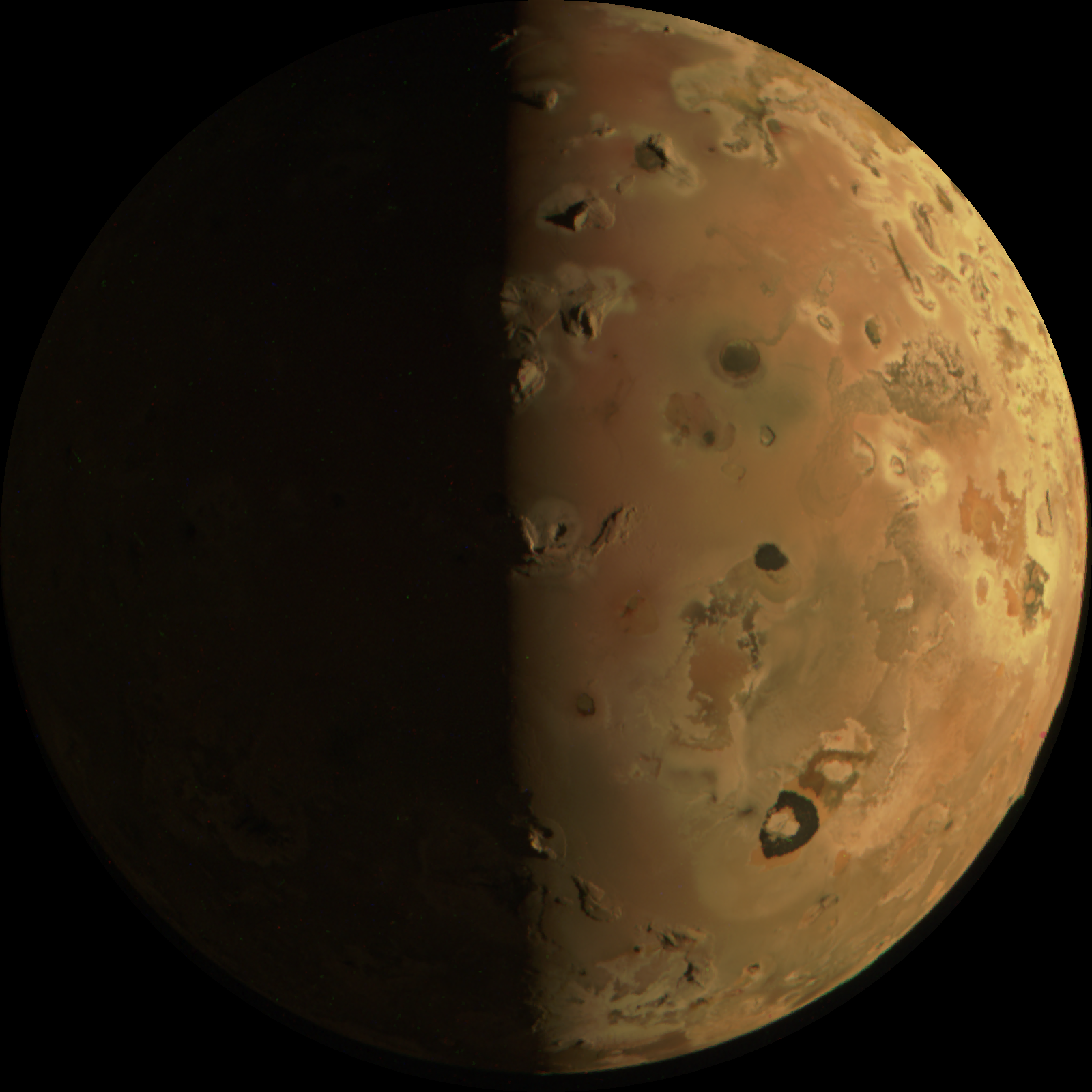Over the holiday weekend, NASA released new images of Jupiter’s icy, volcanic moon Io. The Juno spacecraft flew within roughly 930 miles of the celestial body’s surface on December 30, 2023, capturing images that show off a volatile and pockmarked moon.
[Related: Astronomers find 12 more moons orbiting Jupiter.]
The JunoCam imager captured the new images. They depict a red sphere dotted with giant gray volcanoes. Io is considered the most volcanic world in our solar system. By comparison, Earth sees roughly 50 eruptions each year and Io may have volcanic activity that is 100 times greater. Jupiter’s gravitational pull is largely responsible for Io’s volcanism. A tug-of-war between the large planet and the additional gravitational effects of Jupiter’s other giant moons–Ganymede, Europa, and Callisto–intensifies frictional tidal heating on Io. It takes this moon about 42 hours to orbit Jupiter, and the immense heat produced during orbit likely creates an ocean of magma underneath Io’s surface, fueling eruptions.

According to NASA, this was the closest flyby of Io since a similar flight made by the Galileo spacecraft in October 2001. Launched in 2011, the Juno spacecraft first entered Jupiter’s orbit in 2016. It is the first explorer to look below the gas giant’s dense clouds, with a mission to study our solar system’s largest planet and the origins of the solar system as a whole. The Juno mission has been monitoring the moon’s volcanic activity from distances ranging from about 6,830 miles to more than 62,100 miles. The team hopes that information collected in the December flyby and previous observations from the mission help them learn more about these intense volcanoes.
“We are looking for how often they erupt, how bright and hot they are, how the shape of the lava flow changes, and how Io’s activity is connected to the flow of charged particles in Jupiter’s magnetosphere,” Scott Bolton, Juno’s principal investigator from the Southwest Research Institute, said in a statement.
[Related: A mysterious magma ocean could fuel our solar system’s most volcanic world.]
A second close flyby of Io is scheduled for February 3, 2024, where Juno will fly within about 930 miles of the moon’s surface again. The spacecraft has also performed close flights near the of the Jupiterian moons Ganymede and Europa.
“With our pair of close flybys in December and February, Juno will investigate the source of Io’s massive volcanic activity, whether a magma ocean exists underneath its crust, and the importance of tidal forces from Jupiter, which are relentlessly squeezing this tortured moon,” said Bolton.
Beginning in April, Juno will also perform a series of occultation experiments that use Juno’s Gravity Science experiment to probe the makeup of Jupiter’s upper atmosphere. Studying what materials compose this part of the planet’s atmosphere should provide astronomer’s with key data on Jupiter’s shape and interior structure. The Juno mission is scheduled to wrap-up in late 2025.





